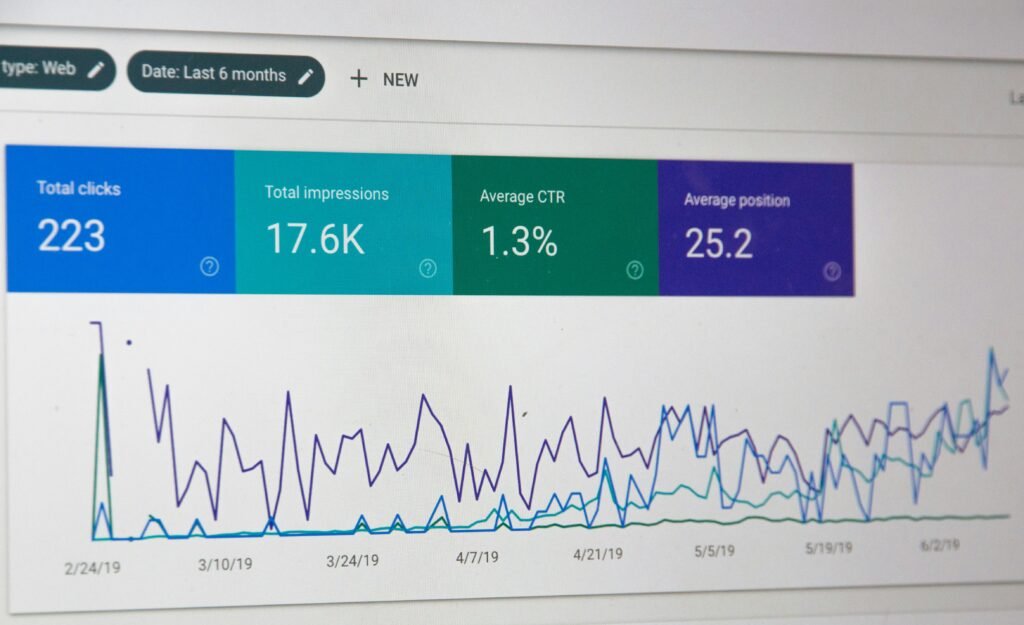
Introduction to AI App Builders
AI app builders have emerged as transformative tools in the landscape of software development, particularly for those without extensive coding knowledge. These platforms leverage artificial intelligence to facilitate the creation of applications, significantly reducing the complexity traditionally associated with programming. By utilizing intuitive interfaces and pre-designed templates, users can construct apps tailored to their needs without writing a single line of code. This is particularly advantageous for entrepreneurs and small businesses aiming to innovate quickly without bearing the cost of hiring specialized developers.
The concept of no-code platforms is central to understanding AI app builders. These platforms empower users to create fully functional applications through drag-and-drop functionality and visual programming. By abstracting the intricate technical details, the no-code approach democratizes app development, allowing a broader demographic to participate. With the increasing integration of AI capabilities, these tools not only enhance the user experience but also add intelligent functionalities, enabling users to integrate features like chatbots, data analytics, and machine learning algorithms effortlessly.
<pas a=”” ability=”” accessibility=”” advancements=”” agilely=”” ai=”” ai-driven=”” also=”” and=”” app=”” application=”” are=”” between=”” bridge=”” bring=”” builders=”” businesses=”” by=”” characterized=”” concepts=”” continues=”” demands.=”” deployment,=”” development=”” development,=”” effectively.=”” era=”” essence,=”” evolve,=”” feasible=”” for=”” fruition=”” further,=”” gained=”” gap=”” generation=”” has=”” herald=”” idea=”” in=”” increasingly=”” individuals=”” innovation.
The Need for No-Code Solutions
In today’s rapidly evolving digital landscape, there is an increasing demand for no-code solutions that cater to the needs of diverse users and organizations. Traditional application development often involves extensive coding knowledge, which can be a significant barrier for companies looking to quickly create and deploy applications. As businesses strive to stay competitive, they require tools that enable expedited development processes without the inherent complexities of traditional coding protocols.
The limitations of conventional coding frameworks become apparent in scenarios where market demands shift suddenly. Businesses often find themselves unable to respond swiftly to new opportunities or challenges due to lengthy development cycles associated with traditional approaches. No-code solutions provide a viable alternative by empowering users to create applications through intuitive interfaces, thus diminishing the reliance on experienced developers. This democratization of app development enables a broader range of individuals, including marketing personnel, project managers, and other non-technical team members, to actively participate in the innovation process.
Moreover, the inclusivity fostered by no-code platforms is a critical factor driving their adoption. By lowering the entry barriers and eliminating the need for extensive programming skills, these solutions allow organizations to tap into the creative potential of their entire workforce. Employees with unique insights into business processes can now easily prototype and implement applications that align with their specific operational requirements. This not only enhances productivity but also fosters a culture of innovation within the organization.
As the digital landscape continues to evolve, the need for no-code solutions becomes increasingly apparent. Businesses that capitalize on these tools stand to gain a significant competitive edge by accelerating their digital transformation initiatives while simultaneously cultivating a more inclusive environment for innovation.
How AI Enhances No-Code Development
The emergence of no-code development platforms has transformed the landscape of application creation, enabling individuals to design, prototype, and deploy applications without any programming knowledge. Artificial Intelligence (AI) plays a crucial role in this process, significantly enhancing the user experience and expanding the capabilities of no-code solutions. By leveraging AI, these platforms offer features that transcend traditional development limitations.
One of the most significant advantages of AI in no-code development is the ability to provide automated suggestions. As users build their applications, AI algorithms analyze user inputs and the intended functionality, suggesting templates, layouts, and components that are conducive to achieving the desired outcome. This guidance not only streamlines the design process but also empowers users to make informed decisions about functionality and aesthetics, leading to better application performance and usability.
Additionally, AI enhances no-code platforms with intuitive drag-and-drop interfaces. These interfaces allow users to easily position elements within their applications, facilitating the seamless integration of various components. AI can also assist in optimizing user interfaces by analyzing data from other successful applications, thereby recommending best practices that improve the overall user experience. This feature makes it possible for even non-technical users to create aesthetically appealing applications that meet user expectations.
Built-in testing capabilities are another facet where AI proves beneficial. Many no-code development tools incorporate AI-driven testing features that automatically identify issues, bugs, and performance bottlenecks during the development phase. This saves users significant time and effort while ensuring that the final product meets high-quality standards prior to deployment. By automating these processes, AI not only simplifies the testing phase but also reduces the likelihood of post-launch hiccups.
In summary, the integration of AI into no-code development platforms not only democratizes application building but also significantly enhances the overall efficiency, usability, and quality of the created applications.
Key Features of AI App Builders
AI app builders have gained significant traction in the realm of application development due to their ability to facilitate the creation of applications without coding expertise. Among the myriad features that set these platforms apart, customizable templates play a pivotal role. These templates allow users to start with a pre-designed layout that can be tailored to meet specific needs. By providing a foundation, customizable templates save time while simplifying the design process, making it more accessible for users without design experience.
Another essential feature is the robust integration capabilities offered by many AI app builders. These platforms often enable seamless connections with external services and APIs, allowing users to incorporate functionalities such as payment systems, social media sharing, and data analytics into their applications. This flexibility enhances the overall user experience, as it empowers creators to build more comprehensive and functional applications without requiring extensive technical knowledge.
User-friendly interfaces are crucial for ensuring that anyone, regardless of technical background, can navigate the app-building process easily. A clean and intuitive interface streamlines the workflow, allowing users to focus on their ideas rather than grappling with complicated menus or functions. Furthermore, real-time collaboration tools foster teamwork by allowing multiple users to engage in the app-building process simultaneously. This feature is especially beneficial in organizational settings, where input from various stakeholders can lead to a more refined final product.
Finally, robust customer support is a hallmark of reputable AI app builders. Whether through tutorials, live chats, or comprehensive FAQs, accessible support ensures that users can solve problems and maximize the platform’s capabilities. The combination of these key features creates a holistic environment conducive to successful app development, catering to varying levels of expertise and enhancing user experience across the board.
Popular AI App Builders in the Market
In recent years, the surge of AI app builders has revolutionized the process of application development, enabling users to create applications without extensive coding knowledge. Here, we explore some of the most popular AI app builders currently available, each offering unique features tailored to meet diverse user needs.
One of the leading platforms is Appy Pie, recognized for its user-friendly interface and no-code capabilities. Appy Pie allows users to create mobile apps, websites, and chatbots easily. The platform offers various pricing tiers, starting from a free plan that allows basic functionality to premium plans that unlock advanced features. Users can develop apps for multiple purposes, including business, e-commerce, and personal projects.
Adalo is another noteworthy AI app builder that emphasizes a visually appealing design. It enables users to build applications rapidly by offering a drag-and-drop interface. One of its unique selling points is the ability to create complex databases within the app construction process. The pricing model is subscription-based, with options that cater to both beginners and seasoned developers. Adalo supports the creation of mobile and web apps, allowing for extensive customization.
Next, we turn to Bubble, which is highly praised for its flexibility and power. It allows users to build fully functional web applications without any coding skills. Bubble’s strength lies in its ability to create dynamic, data-driven apps, making it a favorite among startups. Its pricing structure includes a free tier for basic projects and paid options that provide additional features and resources.
Finally, Thunkable has emerged as a competitive player in the AI app builder market, particularly for mobile app development. Users can create native apps for both iOS and Android environments using an intuitive block-based interface. Thunkable’s unique feature is its real-time testing capability, allowing immediate previews of app designs as they are being created. Its pricing is similarly flexible, catering to both individual users and teams.
These AI app builders reflect the diversity of tools available for users wanting to create apps without code. Each platform provides varying capabilities, pricing models, and target audiences, exemplifying the exciting trends within no-code development.
Case Studies: Successful Apps Built Without Code
The emergence of AI app builders has transformed how businesses and individuals develop applications, enabling them to create powerful solutions without writing a single line of code. Several case studies exemplify this trend, showcasing the effectiveness of no-code platforms in addressing specific challenges.
One notable case is the mobile application “EventBuddy,” designed to streamline event management for local communities. Before its development, community managers faced logistical challenges when organizing events, leading to confusion and low attendance rates. By leveraging an AI app builder, the creators of EventBuddy were able to design an intuitive interface where users could easily create events, invite participants, and manage RSVPs. The no-code approach allowed for rapid iteration based on user feedback, ultimately leading to a polished product within weeks. Since its launch, EventBuddy has significantly enhanced community engagement, increasing attendance at local events and fostering a stronger sense of connection among residents.
Another compelling example is “HealthTrack,” which was developed to help patients manage their medical appointments and track health metrics. Prior to its inception, many patients struggled to keep up with appointments, leading to missed visits and fragmented healthcare management. Utilizing an AI app builder, the HealthTrack team created a user-friendly platform for patients to schedule appointments, receive reminders, and log health data. The no-code process expedited development, enabling the team to incorporate essential features such as medication tracking and health tips. The impact was profound: HealthTrack not only improved patient adherence to medical appointments but also empowered users to take charge of their health with ease.
These case studies illustrate the potential of no-code platforms in solving real-world problems effectively. By democratizing app development, AI app builders enable individuals and organizations to create impactful applications that cater to their unique needs, demonstrating that innovation no longer requires extensive programming knowledge. The success of EventBuddy and HealthTrack highlights the versatility and efficiency of no-code solutions in various sectors.
Challenges of No-Code Development
No-code development has gained significant traction, offering users a straightforward pathway to create applications without needing extensive programming knowledge. However, this approach is not without its challenges and limitations. One of the primary concerns is scalability. As applications grow in complexity and user demand increases, many no-code platforms may struggle to accommodate these changes. Users might find that their applications perform well initially, but as the user base expands, they could experience slow performance or features that fail to deliver as expected. This limitation can hinder businesses looking to grow rapidly.
Furthermore, dependency on third-party platforms poses another significant challenge. Many no-code solutions rely heavily on external services or APIs, which can create unexpected vulnerabilities. If a third-party service experiences downtime or discontinues its offerings, users may find their applications compromised, leading to potential customer dissatisfaction or lost revenue. This reliance makes consumers of no-code solutions consider the long-term viability and support of the services they choose.
Moreover, balancing customization with simplicity can be a complex endeavor. While no-code platforms provide pre-built templates and components, the extent of customization available might not meet all user needs. When users desire specific functionalities that exceed the platform’s capabilities, they may encounter frustration. While the intent of no-code development is to simplify the app creation process, it can inadvertently limit creativity or lead to generic solutions that fail to stand out in the crowded app marketplace.
In light of these challenges, it is essential for users to conduct thorough research before committing to a no-code solution. Understanding the potential limitations, platform dependencies, and customization options is crucial for making informed decisions that align with their business goals.
Future Trends in AI App Building
The landscape of application development is witnessing a seismic shift with the rise of AI app builders. As technology progresses, several trends are emerging, pointing toward a future where no-code solutions will further dominate the market. One of the primary trends is the increased automation of app development processes. Automation streamlines various aspects of app creation, from design to deployment. This proficiency not only accelerates development timelines but also enhances the overall quality of applications.
Furthermore, integration of advanced artificial intelligence into these platforms is expected to grow. AI capabilities will empower users, enabling them to create more sophisticated applications without requiring extensive programming knowledge. The evolution of AI in app builders includes features such as predictive analytics, personalized user experiences, and intuitive design tools that adapt based on user behavior. This integration will significantly reduce barriers to entry for individuals and businesses alike, fostering innovation across diverse industries.
With the proliferation of no-code and low-code tools, the role of traditional developers is also evolving. While these developers will still be essential for complex projects that require coding expertise, there will be a shift towards collaboration. Developers can focus on cultivating deeper integrations and creating custom features that no-code platforms lack. This transition will likely lead to a more collaborative and interdisciplinary approach to app development, where developers act as advisors or mentors for users navigating the no-code environment.
Additionally, market demand for such solutions is projected to rise. Companies are increasingly seeking efficient and cost-effective ways to bring applications to market. This growing interest will necessitate further advancements in AI app builders, making them even more capable and user-friendly. As the landscape evolves, it is clear that the synergy between AI technology and no-code platforms will play a pivotal role in shaping the future of application development.
Conclusion: Embracing No-Code Innovation
As we have explored throughout this blog post, the rise of AI app builders marks a significant turning point in the landscape of application development. These no-code platforms provide an opportunity for individuals and organizations alike to engage in the creation of applications without the extensive technical know-how traditionally required. By leveraging artificial intelligence, these tools streamline the development process and make it accessible to a broader audience, including entrepreneurs, small business owners, and even non-technical users.
Innovative no-code solutions empower diverse users to bring their ideas to life with minimal barriers. The ability to build applications tailored to specific needs without engaging in complex coding reduces not only the time involved but also the financial costs associated with app development. This democratization of technology fosters a culture of creativity and experimentation, allowing users to test their ideas quickly and effectively.
Moreover, as the demand for customized applications surges, it is crucial to recognize how AI app builders address this need by making tools available that can rapidly adapt to changing requirements. These platforms represent a versatile option for companies looking to innovate and respond to market demands efficiently. Embracing these solutions positions users at the forefront of technological advancement, aligning with trends in agile development and user-centric design.
In conclusion, the evolution of no-code platforms driven by artificial intelligence is reshaping how applications are developed. By utilizing these innovative solutions, individuals and organizations can significantly enhance their capacity to innovate and create, ultimately bridging gaps in digital accessibility. Therefore, embracing AI app builders not only fosters a culture of innovation but also ensures that more voices are heard and represented in the ever-evolving digital landscape.




